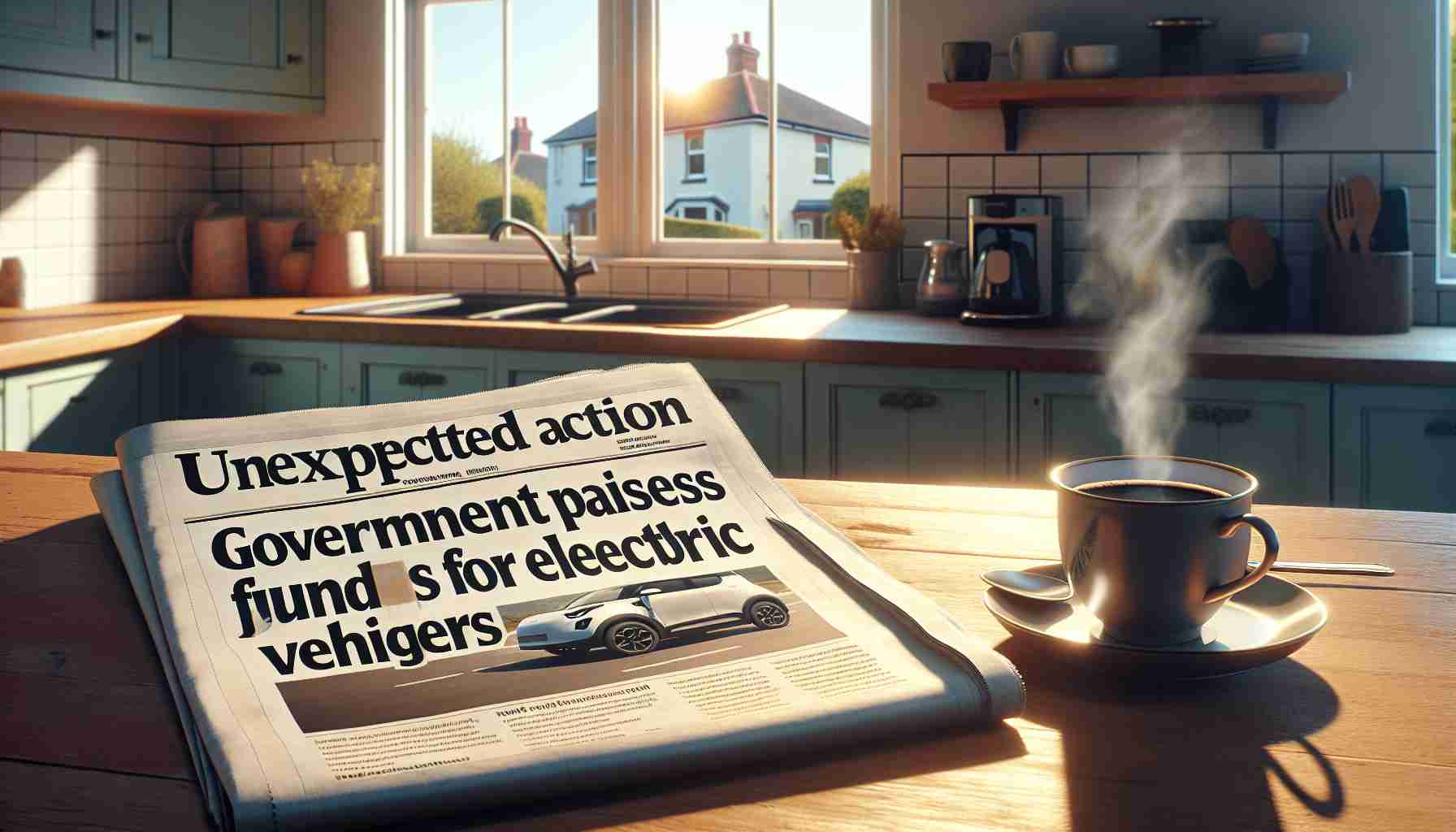- The Trump administration has paused funding for electric vehicle (EV) chargers, affecting many states, including Oregon.
- This decision impacts the National Electric Vehicle Infrastructure (NEVI) program, which aimed to invest $5 billion in highway charging networks.
- States are forced to seek alternatives for EV infrastructure, as federal funding remains uncertain.
- The suspension of funds raises questions about the future of environmental policies and transportation innovations in the U.S.
- This development highlights the volatility of federal funding and its influence on infrastructure projects.
In a striking turn of events, the Trump administration has made headlines by halting funds meant for electric vehicle (EV) chargers, a decision impacting many states, including Oregon, which stood to receive an impressive $52 million. This unexpected move is part of a broader effort by the White House to curb Biden-era initiatives.
The National Electric Vehicle Infrastructure (NEVI) program, with a grand vision of pumping $5 billion into charging networks across highways, is now in a state of limbo. This program had been celebrated for its potential to revolutionize transportation and reduce carbon emissions. Previously, states had their ambitious plans greenlit by the Federal Highway Administration, marking a step towards a more sustainable future.
But what’s next? This sudden block has left states scrambling for alternatives, as the dream of extensive EV charging networks takes a hit. It’s a reminder of the volatile nature of federal funding and the political push-and-pull defining much of today’s infrastructure discourse.
The key takeaway here is the uncertain fate of nationwide EV infrastructure projects. As states navigate this budgetary impasse, the broader implications for environmental policies and transportation innovations hang in the balance. For now, the world watches closely, waiting to see how this funding freeze will impact the future of green transportation. Will states find a way to push forward, or is the road to a sustainable future facing unforeseen detours?
Are Electric Vehicle Charging Networks at Risk? The Funding Freeze Unveiled
Understanding the Impact of the Funding Halt on EV Infrastructure
The recent decision by the Trump administration to halt funds for electric vehicle (EV) chargers has sent shockwaves through the ongoing efforts to build robust EV infrastructure in the US. States like Oregon, which were anticipating significant financial support, are now facing new challenges as EV infrastructure plans are put on hold. The move, which affects the National Electric Vehicle Infrastructure (NEVI) program, could significantly alter the landscape of green transportation nationwide.
Why Is EV Infrastructure Critical?
Pros of EV Infrastructure:
1. Reduced Carbon Emissions: EV infrastructure supports the use of electric vehicles, which are crucial for reducing greenhouse gas emissions.
2. Energy Security: Encouraging EV adoption can lead to decreased dependency on fossil fuels.
3. Economic Growth: Developing EV infrastructure creates jobs and spurs innovation in the energy sector.
Cons of EV Infrastructure:
1. High Initial Costs: Building charging networks requires significant investment.
2. Technological Challenges: Solutions need to be implemented to improve charging speed and reliability.
3. Resource Allocation: Finding strategic locations for chargers can be complex and contentious.
How Might States Respond?
States affected by the funding freeze are exploring alternative avenues to continue developing their EV infrastructure:
– State and Local Funding: Some states may consider reallocating local resources and partnering with private companies.
– Public-Private Partnerships: Collaborations with private companies, which have vested interests in EV growth, could offer new funding mechanisms and technology solutions.
– Other Federal Programs: States might seek support from other federal initiatives that promote green technologies and infrastructure.
The Broader Implications for Environmental Policy
The halt in funding has brought attention to the ever-volatile nature of federal support for environmental initiatives. This situation underlines the necessity for states to have contingency plans to maintain progress in their green transportation goals. Furthermore, it reflects the broader discussions about how political changes can directly impact shifts towards sustainability.
Will the Market for EVs Be Hurt?
Despite the current challenges, the EV market is resilient. Long-term forecasts suggest a strong growth trajectory, buoyed by advancements in battery technology and increasing consumer demand for sustainable transportation options. Manufacturers and private sectors continue to push forward with innovative solutions to expand EV adoption.
Future Predictions and Trends
– EV Sales Growth: Despite policy fluctuations, the demand for EVs is expected to increase, reflecting consumer interest in environmentally friendly options.
– Innovative Charging Solutions: Technologies like fast charging and wireless charging are likely to gain traction as alternatives to traditional charging stations.
– Policy Developments: Future administrations may reverse current decisions, reinstating or even enhancing funding for infrastructure projects.
Staying Informed
For those interested in the latest developments in electric vehicle infrastructure, market trends, and related innovations, consider visiting notable industry websites such as:
– TESLA
– Ford
– General Motors
These resources provide updates on vehicle releases, company strategies, and how industry leaders are responding to both challenges and opportunities in the EV sector.














